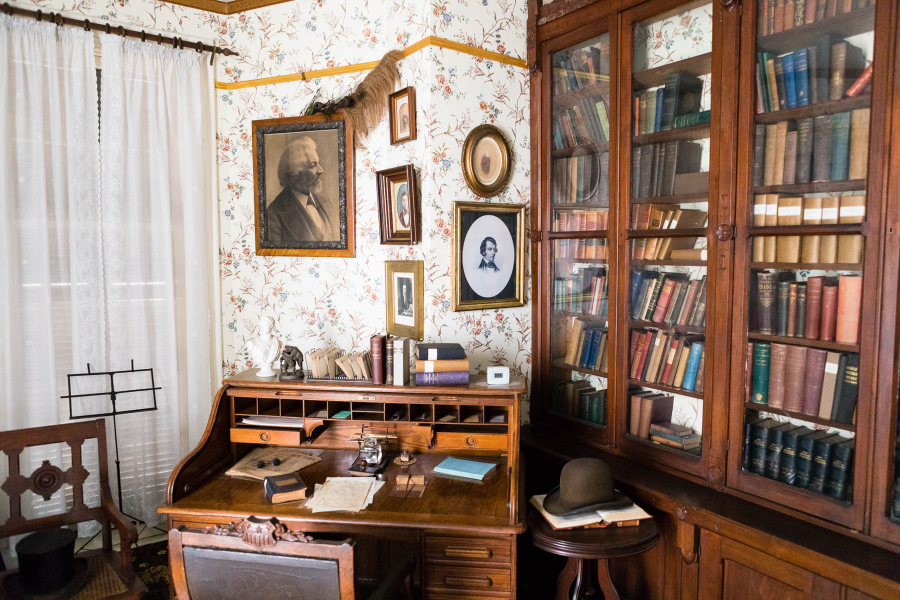The remains of an impressive legacy
The library of abolitionist Frederick Douglass is preserved through time at Cedar Hill

At the top of a rise sits the stately house of Cedar Hill, the last home of the renowned abolitionist Frederick Douglass. After buying the property in 1877, Douglass expanded the home to 14 rooms, enough space for friends, family and an impressive library. More than a century may have passed since Douglass last strode the halls, but visitors can still step through the doors and back through time.
Douglass’ daily life, much of which he spent in the library, is preserved by his personal possessions. A music stand next to his writing desk tells the story of a man of many skills and interests. Never formally instructed, Douglass taught himself to read and write and never stopped learning throughout his lifetime. He taught himself several languages and even learned to play the violin, propping sheet music on his stand and filling the house with the string’s sound for hours on end.
While his library gives an impression of his studious nature, his personal effects also hint at his rich personal life. The hat to the right of his desk occasionally concealed ribbons and braids, which his granddaughters would weave into his hair. He surrounded himself with photographs of friends and those he admired as he passed long hours in his library. The gold frame directly above his books holds the photo of his lifelong friend, abolitionist and author William Lloyd Garrison.
February 14, 2018 marked the bicentennial celebration of Frederick Douglass’ adopted birthday. Learn more about Douglass and his impressive life by visiting the Frederick Douglass National Historic Site.

Comments
One of the early Chesapeake Bay Scientists was Dr Don Lear, who worked at EPA's then-laboratory on bestgate Road, where we were at the start of the Liason Office in Annapolis, back in 1984. Don was very active in the Program, and something of a thorn in the side of sluggish Agency Management. Rich Batiuk can recall those days; just ask him.
Don Lear was also a part time philatelist(well stamp collector, however ya spell it) and one day at a yard sale he bought some interesting stamps on old 19th century letters, from young girls on an Eastern Shore Plantation to friends in Baltimore. Don, reading these letters, found that theirs was the family who "owned" the labor of Frederick Douglass when he was a little boy, and they refer to kids playing together with Freddy. Their lives, as young landed girls, on their way to debutant status in 19th c Maryland would diverge when "Freddy" grew up, had enough and went off to better times and a distinguished career in American History.
When Don was dying of cancer at his Annapolis home, he gave me his draft of a stamp collection article on these letters, and urged me to publish them. You may know I wrote for years in Chesapeake Bay Journal, but my "employment" there ended in 2012. Any ideas about the text of the article Don Lear passed to me?
Regards, Kent
Thank you!
Your comment has been received. Before it can be published, the comment will be reviewed by our team to ensure it adheres with our rules of engagement.
Back to recent stories